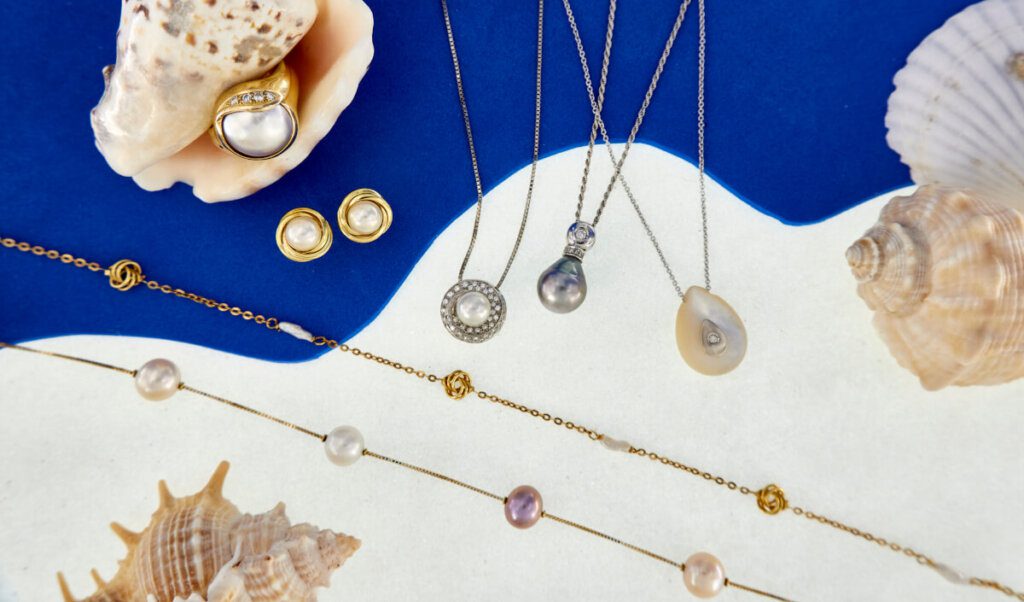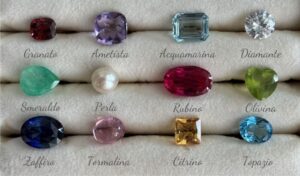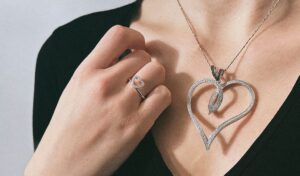
Il fascino senza tempo delle perle
Hai mai ammirato da vicino l’inarrivabile raffinatezza di una collana di perle vere? Abbinata a sobri orecchini di perle e magari a un bracciale di perle per ottenere una parure di estrema eleganza, si conferma un gioiello irrinunciabile per chiunque ami uno stile distinto e signorile. Ecco tutto ciò che devi sapere sul fascino delle perle!
Facciamo un passo indietro: come nasce una perla?
Dall’acqua agli orecchini con perle: le origini.
Questi elementi preziosi dal caratteristico colore lattescente si formano quando un corpo estraneo (ad esempio un granello di sabbia, ma anche una piccola alga o un frammento di conchiglia) entra accidentalmente in un mollusco provocando una particolarissima reazione di isolamento. Non riuscendo a liberarsi dall’intruso, infatti, l’animale inizia a secernere una sostanza particolare, la madreperla, che va ad avvolgere il corpo estraneo per renderlo inoffensivo. Oggi questo fenomeno viene alimentato abilmente dall’uomo per ottenere le perle coltivate, finalmente accessibili a tutti.
Collane con perle: ieri e oggi
I tentativi umani di introdurre corpi estranei (detti nuclei) nei molluschi perliferi per ottenere questo prezioso gioiello iniziarono diversi secoli fa. Kokichi Mikimoto, il “signore delle perle”, con il suo meticoloso metodo riuscì all’inizio del ‘900 ad avere buoni risultati e a democratizzare le perle. Non a caso, sempre nelle terre nipponiche ha origine l’attività tradizionale delle “ama”, pescatrici subacquee specializzate nella raccolta manuale delle perle nel mar del Giappone. Fortunatamente, oggi per creare un bracciale di perle vere non è necessario ricorrere a tecniche pericolose: la produzione di questa preziosa gemma organica, infatti, è stata ottimizzata per offrire prodotti belli e soprattutto accessibili.
Tipologie di perle
Le perle coltivate si dividono in perle di acqua dolce (chiamate anche “perle di fiume” o freshwater pearls) e perle di acqua salata. Quest’ultime sono classificate in base al luogo di origine in tre diverse tipologie: Akoya (o perle giapponesi), perle scure di Tahiti e perle dei mari del Sud (australiane). Oltre all’origine, un’altra caratteristica determinante nell’individuazione del tipo di perla è sicuramente la forma: se le perle tradizionali giapponesi sono quelle sferiche (le più pregiate e costose), si possono ottenere splendidi gioielli e collane con ciondolo con perle particolari anche impiegando forme ovali, a goccia, a chicco di riso o di forme barocche (scaramazze), ossia particolarmente irregolari.
Dimensioni e colorazioni
A livello di dimensioni le perle solitamente acquistabili in negozio presentano un diametro che varia dai 4 agli 8 millimetri, mentre le perle nere e quelle australiane sono più grandi e possono raggiungere i 10 o 15 mm. Il colore tradizionale delle perle è il bianco e l’avorio, impiegate in numerosissimi gioielli tradizionali come gli orecchini doppia perla o la classica collana oro e perle, ci sono perle di altri colori: arancio, oro, grigio e nero con sfumature diverse che vanno dal grigio al rosa, dal verde al viola.
Collana con perla vera o d’imitazione?
Oltre alle perle vere (naturali o di allevamento), oggi il mercato offre una vasta gamma di imitazioni in plastica o in vetro, come le famose perle di Maiorca. Se vuoi acquistare dei gioielli come un paio di orecchini oro e perle, puoi verificare la tipologia del materiale impiegato a partire dal peso e dalla temperatura: le perle in plastica sono particolarmente leggere e al tatto risultano lisce e calde, mentre in generale tutte le perle d’imitazione, comprese quelle in vetro, svelano la loro natura se strofinate delicatamente l’una contro l’altra (l’assenza di attrito rivela la mancanza delle imperfezioni proprie delle perle naturali).
Dai gioielli indossati dalle nobildonne dei secoli passati all’anello oro bianco con perla e diamante sfoggiato da Ariana Grande in occasione del fidanzamento, i “doni dell’ostrica” non smettono di farci sognare. Scopri le proposte di Ledial cliccando qui.










